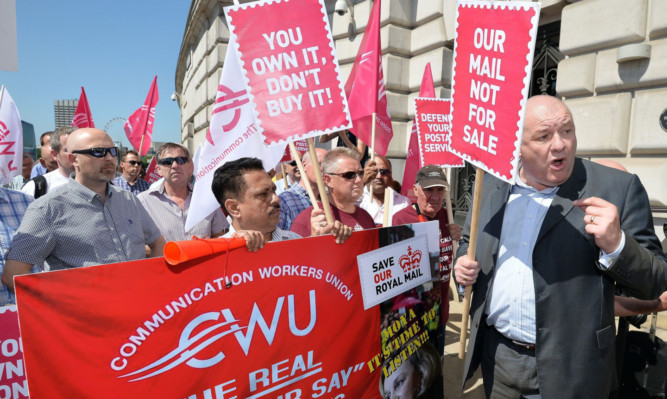Ministers have been accused of trying to “buy off” angry Royal Mail staff after unveiling privatisation plans that would see them handed thousands of pounds in free shares.
Business Secretary Vince Cable said up to 10% of the new company would be gifted to around 150,000 postmen, postwomen and other employees under the £3 billion sell-off, which will begin by the end of the financial year.
Putting the firm on a more commercial footing was crucial to secure the universal six-days-a-week service it provides, he insisted.
However, the Communication Workers Union (CWU) said its members were “too long in the tooth” to be swayed by windfalls and promised to fight the proposals.
Labour also accused the coalition of selling the organisation “on the cheap” in a desperate bid to make up for George Osborne’s failing economic strategy.
In his statement to the Commons, Mr Cable said the Government would sell off a majority stake in the business expected to be 51% initially.
Employees who want to buy more shares on top of their free allocation will get priority and the remainder will be available to the general public as well as institutional investors under the terms of the stock market flotation.
Mr Cable said: “This is logical, it is a commercial decision designed to put Royal Mail’s future on to a long-term sustainable basis.
“Now the time has come for Government to step back from Royal Mail, allow its management to focus wholeheartedly on growing the business and planning for the future.
“It’s now time for employees to hold a stake in the company and share in its success.”
However, the CWU, which staged a protest outside Royal Mail’s London headquarters, dismissed his arguments.
Deputy general secretary Dave Ward said: “I don’t think our members will be bought off by the free share issue.
“I believe our members are too long in the tooth not to know the dangers of privatisation.”
Mr Ward said it was “simply not true” Royal Mail could not survive without being privatised.
“I really do not understand what the Government are trying to achieve by this,” he said. “If you think about the profits the Royal Mail are now making, there’s no need for it to be privatised.
“What privatisation will do is destroy the UK’s universal postal service.
“There’s no way private companies can maintain six-day-a-week deliveries to every single address in the UK.”
He expected members to be balloted by the end of September on whether to take strike action.
Royal Mail chief executive Moya Greene has promised to create a contract with the CWU to ensure workers’ pay and conditions cannot be altered without the union’s backing.
Ms Greene said: “We will create a legally-binding and enforceable contract with the CWU. Pay and protections could not be changed for the period of the contract.”
